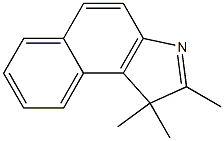PARAFFIN
- CAS NO.:64771-71-7
- Molecular Weight: 0
- MDL number: MFCD00131611
- EINECS: 265-232-9
- Update Date: 2023-11-28 16:31:44
What is PARAFFIN?
Chemical properties
Light mineral oil is a transparent, colorless liquid, without fluorescence in daylight. It is practically tasteless and odorless when cold, and has a faint odor when heated. The USP32–NF27 specifies that light mineral oil may contain a suitable stabilizer.
Production Methods
Light mineral oil is obtained by the distillation of petroleum. A suitable stabilizer may be added to the oil.
Definition
PARAFFIN is a combination of normal paraffins having carbon numbers predominantly greater than C10 obtained by urea adduction or molecular sieve processes.
Flammability and Explosibility
Non flammable
Pharmaceutical Applications
Light mineral oil is used in applications similar to those of mineral
oil.It is used primarily as an excipient in topical pharmaceutical
formulations where its emollient properties are exploited in
ointment bases. It is also used in ophthalmic
formulations. Light mineral oil is additionally used in oil-inwater
and polyethlylene glycol/glycerol emulsions; as a solvent
and lubricant in capsules and tablets; as a solvent and penetration
enhancer in transdermal preparations;and as the oily medium
used in the microencapsulation of many drugs.
Light mineral oil is also used in cosmetics and certain food
products.
Safety
Light mineral oil is used in applications similar to those of mineral
oil. Mineral oil is considered safe by the FDA for direct use in foods.
However, oral ingestion of large doses of light mineral oil or chronic
consumption may be harmful. Chronic use may impair appetite and
interfere with the absorption of fat-soluble vitamins. It is absorbed
to some extent when emulsified, leading to granulomatous
reactions. Oral and intranasal use of mineral oil or products
containing mineral oil by infants or children is not recommended
because of the possible danger of causing lipoid pneumonia.
See Mineral Oil for further information.
storage
Light mineral oil undergoes oxidation when exposed to heat and
light. Oxidation begins with the formation of peroxides, exhibiting
an ‘induction period’. Under typical storage conditions, the
induction period may take months or years. However, once a trace
of peroxide is formed, further oxidation is autocatalytic and
proceeds very rapidly. Oxidation results in the formation of
aldehydes and organic acids, which impart taste and odor. The USP32–NF27 permits the addition of suitable stabilizers to retard
oxidation, butylated hydroxyanisole, butylated hydroxytoluene,
and alpha tocopherol being the most commonly used antioxidants.
Light mineral oil may be sterilized by dry heat.
Light mineral oil should be stored in an airtight container in a
cool, dry place and protected from light.
Incompatibilities
Incompatible with strong oxidizing agents.
Regulatory Status
GRAS listed. Accepted in the UK for use in certain food applications. Light mineral oil is included in the FDA Inactive Ingredients Database (ophthalmic preparations; oral capsules and tablets; otic, rectal, topical, and transdermal preparations). Included in nonparenteral medicines licensed in the UK. Included in the Canadian List of Acceptable Non-medicinal Ingredients.
Properties of PARAFFIN
| Density | 0.85 g/mL at 20 °C |
| vapor pressure | 5Pa at 20℃ |
| refractive index | n |
| form | light oil |
| color | white |
| Dielectric constant | 2.0(Ambient) |
| EPA Substance Registry System | Paraffins (petroleum), normal C>10 (64771-71-7) |
Safety information for PARAFFIN
Computed Descriptors for PARAFFIN
New Products
4-AMINO-TETRAHYDRO-PYRAN-4-CARBOXYLIC ACID HCL 4-(Dimethylamino)tetrahydro-2H-pyran-4-carbonitrile 4-AMINO-TETRAHYDRO-PYRAN-4-CARBOXYLIC ACID 4-Aminotetrahydropyran-4-carbonitrile Hydrochloride (R)-3-Aminobutanenitrile Hydrochloride 5-Bromo-2-nitropyridine Nimesulide BP Aceclofenac IP/BP/EP Diclofenac Sodium IP/BP/EP/USP Mefenamic Acid IP/BP/EP/USP Ornidazole IP Diclofenac Potassium 3-Bromopyrazole (3aR,4R,5R,6aS)-hexahydro-5-Triethyl silyloxy-4-((E)-3-oxo-5-phenylpent-1- enyl)cyclopenta[b]furan-2-one. 1-Chlorocarbonyl-4-piperidinopiperidine 1-Bromo-4-phenyl-2-Butanone 4-Amino-2-fluoro-N-methylbenzamide 1,1'-Carbonyldiimidazole SODIUM AAS SOLUTION ZINC AAS SOLUTION BUFFER SOLUTION PH 10.0(BORATE) GOOCH CRUCIBLE SINTERED AQUANIL 5 BERYLLIUM AAS SOLUTIONRelated products of tetrahydrofuran








You may like
-
 Paraffin CAS 64771-71-7View Details
Paraffin CAS 64771-71-7View Details
64771-71-7 -
![Dimethyl [2-oxo-3-[3-(trifluoromethyl)phenoxy]propyl]phosphonate 99%](https://img.chemicalbook.in//Content/image/CP5.jpg) Dimethyl [2-oxo-3-[3-(trifluoromethyl)phenoxy]propyl]phosphonate 99%View Details
Dimethyl [2-oxo-3-[3-(trifluoromethyl)phenoxy]propyl]phosphonate 99%View Details
54094-19-8 -
 85-81-4 99%View Details
85-81-4 99%View Details
85-81-4 -
![208111-98-2 (3aR,4R,5R,6aS)-5-(Benzoyloxy)hexahydro-4-[(1E)-3-oxo-4-[3-(trifluoromethyl)phenoxy]-1-buten- 1-yl]-2H-cyclopenta[b]furan-2-one 99%](https://img.chemicalbook.in//Content/image/CP5.jpg) 208111-98-2 (3aR,4R,5R,6aS)-5-(Benzoyloxy)hexahydro-4-[(1E)-3-oxo-4-[3-(trifluoromethyl)phenoxy]-1-buten- 1-yl]-2H-cyclopenta[b]furan-2-one 99%View Details
208111-98-2 (3aR,4R,5R,6aS)-5-(Benzoyloxy)hexahydro-4-[(1E)-3-oxo-4-[3-(trifluoromethyl)phenoxy]-1-buten- 1-yl]-2H-cyclopenta[b]furan-2-one 99%View Details
208111-98-2 -
 2033-24-1 99%View Details
2033-24-1 99%View Details
2033-24-1 -
 Meldrums acid 2033-24-1 99%View Details
Meldrums acid 2033-24-1 99%View Details
2033-24-1 -
 Cyaclopentane carboxylic acid 99%View Details
Cyaclopentane carboxylic acid 99%View Details
3400-45-1 -
 2-Aminopyridine 504-29-0 99%View Details
2-Aminopyridine 504-29-0 99%View Details
504-29-0